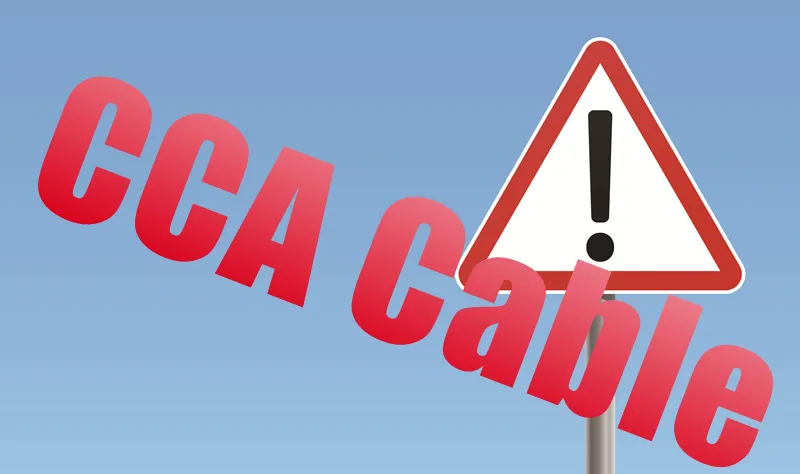Si budget pro network infrastructure limitata potest tentare experiri humilis sumptus funem. CCA (aere Vestigia Aluminium) funes potest esse perfectum ad sumptus peculi.
Dum CCA wires apparent ad munus in eodem modo ut vexillum genus 5E vel genus VI funem. Sed non sunt significant differences, quae posset causare network proventus. Potest etiam causare negotium continuitatem de, et salus de.
Sit scriptor discere cur CCA funes causa network problems.
Limited currit procul:
Signum vires humilis in iam CCCA funem, quod decurrit circa C-meter maximum cum comparari solidum aeris genus 5E.
Ut ex habens retransmit magis facis data, hoc potest in notitia damnum.
Tardus Data translatio:
Resistentibus ferro et aluminium substantialiter altior quam aeris.
Et Usage of Category V et VI lacus funes potest consequuntur in ingens quantitates notitia damnum et in tempore reducere transmissione celeritates.
Tendentes intolerantia:
CCA funem dura et flectere repugnant.
Ob suam reducitur tensile vires et labe, simpliciter trahens eam off in reel aut ex arca ut conteram in conductor.
Est substantial periculum conductoribus solveret durante installation, etiamsi non conteram in remotionem a stipare.
Environmental discrimina:
Aluminium in CCA funes est valde reactive metallum oxidizes cum patere oxygeni.
Hoc potest consequuntur in network infrastructure termination defectis, unde in conectividad exitibus. Locating et fixing haec exitibus potest accipere longo tempore.
Non-flexibile:
CCA CREDIVors sunt inelastic et cito confractus; Failures sunt relatum etiam cum lacus panel et faceplate movetur.
CCA Wires potest etiam confringere sicut effectus trahendum vel tonderet. Hoc fit in packaging vel per partum, ex humilitatem turnile viribus.
Suus 'etiam tanti notatis quod CCA Cabling habet finitum flectere radium.
Attenuation:
CCA funem non potest delivering Aer notitia significationibus per longum spatia.
ADTENUPATIO est ad phantasiam verbum enim deteriorationis in qualitate, quae in hoc casu refert ad signum est qualitas.
Temperature:
Ob filae se calefaciunt et potentia causando ignis, CCA funem non oportet ad potestatem in Aer (Poe).
Si resistentia intra filum non est in statera, potest stillabunt in voltage. In voltage gutta potest facere damnum ad POE fabrica.
Propter haec omnia network problems, vos proprie consideramus specs in vestri funem.
Ultima verba
Purchase ex honesta et bene notum fontes. Si autem reseller aut manufacturer vendiderit CCA funem, maneat ab illis.
Si autem reseller aut manufacturer est paratus vendere te cabling quod est scilicet alienari pro usu. Vos should skeptical quis promissa faciunt de eorum products.
Quia aluminium ponderat minus aeris, cca funem levius.
Cum conferre naviculas pondera suspected runped notum summus qualitas pura aeris funem. CCA funem erit levior, quae suspicionem.
Si observe quod conductoribus sunt maxime fragilis et conteram cum removere kinks per installation. Vos should pause et assess situ.
CCA funes si non elegit pro opportunitate locis, ut detrector opus. Sed tu prius scientiam ante emisti eos.

